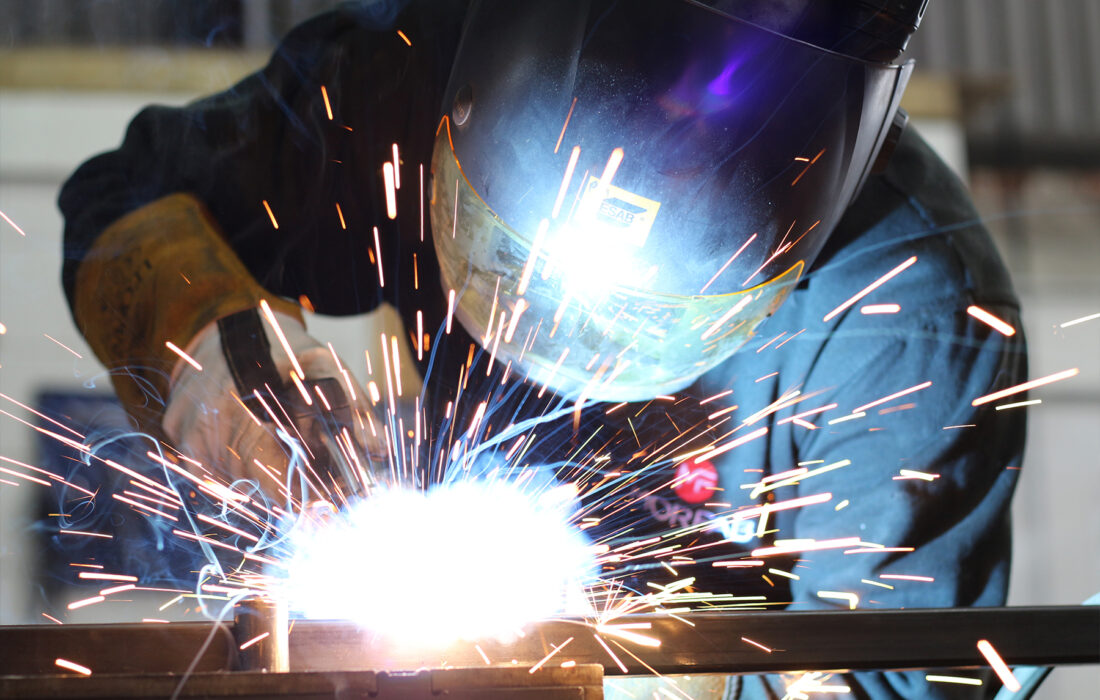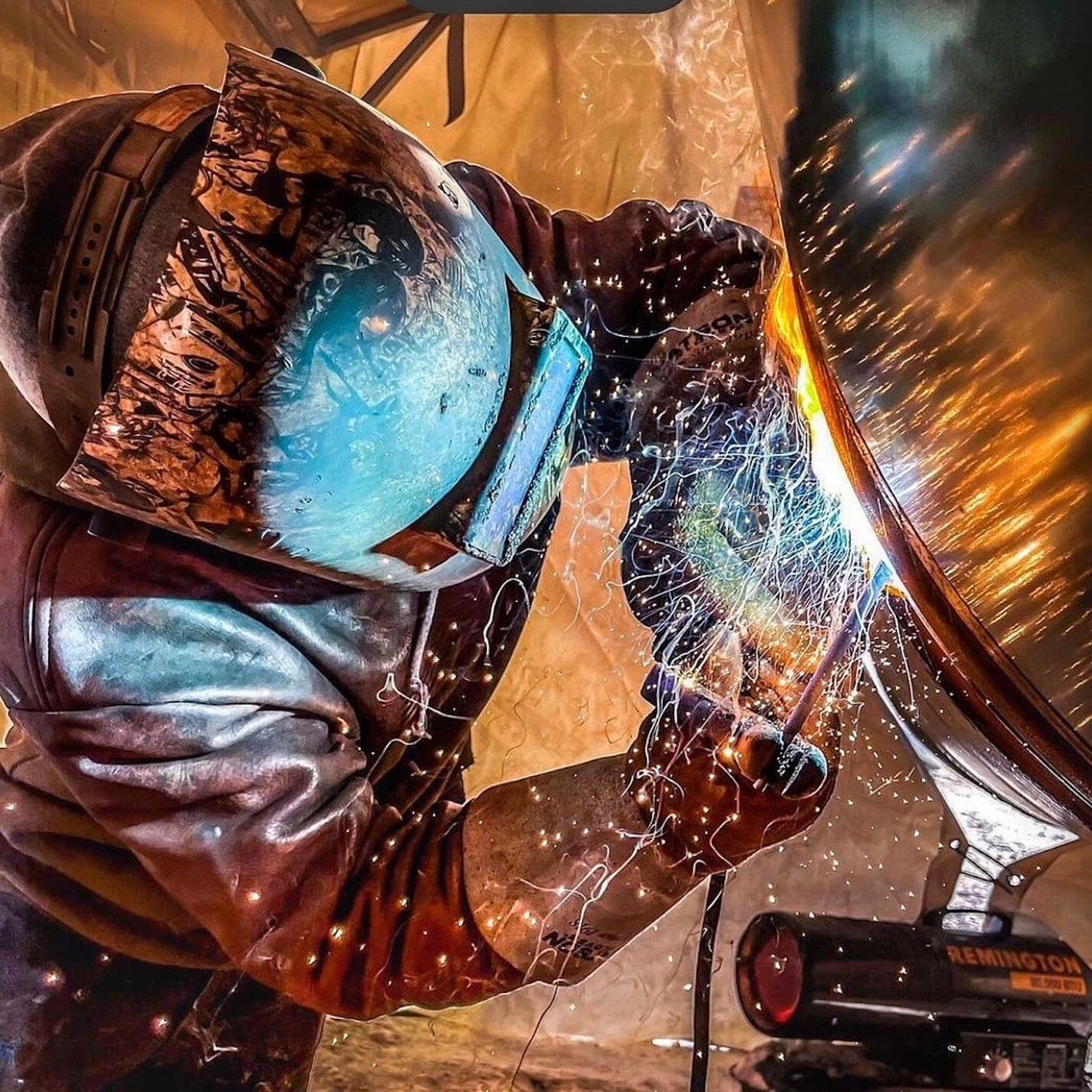Usual Welding Repair Service Issues and Just How to Address Them Efficiently
Welding repairs often come across a series of problems that can endanger the honesty of the last product. Typical troubles consist of inadequate infiltration, porosity, and misalignment, amongst others. Each issue presents special difficulties that require particular methods for resolution. Comprehending these issues is vital for welders intending to boost their results and skills. This discussion will certainly check out these common welding repair service concerns and effective techniques to resolve them.
Inadequate Penetration
Insufficient penetration takes place when the weld metal stops working to completely fuse with the base material, causing weak joints and possible architectural failings. This problem typically comes from insufficient heat input, incorrect electrode angle, or improper welding speed. Welders might run into poor infiltration as a result of a mistake of the essential parameters for a specific material thickness or type. Additionally, contamination on the base material's surface area can impede effective bonding, intensifying the issue. To address poor penetration, welders ought to guarantee appropriate settings on their tools and maintain a tidy work surface area. Regular examination of welds is advised to recognize any type of shortages early, enabling for timely improvements and the prevention of endangered architectural honesty in welded settings up.
Porosity
Porosity is an usual flaw in welded joints that shows up as small gas bubbles caught within the weld steel. This flaw can endanger the honesty of the weld, leading to minimized strength and prospective failing under anxiety. Montana Mobile Welding and Repair. Porosity typically develops from contamination, dampness, or inappropriate welding methods, which permit gases to get away into the molten weld swimming pool. To resolve porosity, welders need to ensure appropriate surface area prep work, keep a clean functioning atmosphere, and utilize suitable welding parameters. In addition, choosing the ideal filler product and shielding gas can reduce gas entrapment. Regular inspection and screening of welds can help determine porosity early, assuring timely restorative activities are taken, thus maintaining the top quality and dependability of the bonded framework
Misalignment
Misalignment in welding can emerge from different variables, consisting of improper configuration and thermal growth. Understanding the origin is important for efficient resolution. Several correction techniques are available to realign parts and guarantee architectural stability.
Root causes of Misalignment
Welding imbalance frequently comes from a selection of underlying concerns that can endanger structural honesty. One key reason is inappropriate fit-up of elements before welding, which can result in spaces and uneven surfaces. Variants in thermal development during the welding procedure can likewise result in distortion, especially if the products being signed up with have various coefficients of development. In addition, poor fixturing and clamping may fall short to hold parts firmly in place, leading to motion throughout welding. Poorly maintained devices, including welding makers and tools, might introduce disparities in the weld grain, additional contributing to misalignment. Lastly, driver error, stemming from insufficient training or experience, can also play a considerable duty in developing misaligned welds.
Improvement Methods Readily Available
Resolving misalignment efficiently calls for a combination of restorative techniques customized to the particular concerns available. One common technique is making use of fixtures or jigs to hold components in the appropriate position throughout welding, making sure constant alignment. In addition, preheating the products can assist decrease distortion and enhance fit-up. For significant imbalance, mechanical adjustment strategies, such as utilizing hydraulic jacks or clamps, can be used to remedy the placement before welding. Post-weld warmth treatment may likewise be essential to relieve tensions brought on by misalignment. Finally, cautious assessment and modification during the configuration phase can prevent imbalance problems from coming to be substantial problems, advertising a smoother welding procedure and improving overall structural integrity.
Distortion
Distortion is a typical obstacle in welding that can arise from numerous elements, including irregular cooling and heating. Recognizing the sources of distortion is important for applying reliable prevention techniques. Addressing this problem not only improves architectural honesty however likewise boosts the overall top quality of the weld.
Root causes of Distortion
When based on the intense warm of welding, materials usually go through adjustments that can bring about distortion. This phenomenon mainly develops from thermal development and contraction during the welding procedure. As the weld area warms up, the product expands; upon cooling, it gets, which can create inner stresses. Furthermore, uneven heating across a workpiece can worsen these tensions, causing bending or bending. The kind of product additionally plays a substantial duty; steels with varying thermal conductivity and coefficients of growth might respond differently, causing unpredictable distortions. Bad joint layout and insufficient fixturing can add to imbalance during welding, enhancing the possibility of distortion. Comprehending these causes is necessary for effective welding repair service and avoidance techniques.
Avoidance Techniques
Reliable avoidance methods for distortion throughout welding concentrate on managing warm input and ensuring appropriate joint layout. Keeping a consistent heat input helps to decrease thermal expansion and contraction, which can lead to distortion. Using strategies such as preheating the workpiece can also lower the temperature level gradient, advertising uniform home heating. Additionally, selecting appropriate joint layouts, such as T-joints or lap joints, can improve security and lower anxiety concentrations. Implementing proper fixturing to protect the workpieces in position better aids in preserving placement throughout the welding process. Staggered welding series can distribute warmth much more evenly, stopping localized distortion. By applying these methods, welders can substantially decrease the possibility of distortion and enhance the overall high quality of their welds.
Splitting
Fracturing is a common concern encountered in welding repair services, often resulting from numerous variables such as inappropriate cooling prices, material choice, or insufficient joint prep work. The incident of splits can substantially endanger the honesty of the weld, resulting in prospective failings during procedure. To address this concern, welders should first analyze the origin, guaranteeing that materials are suitable and suitably picked for the specific application. Additionally, managing the cooling rate during the welding process is necessary; rapid air conditioning can induce anxiety and cause find out this here breaking. Proper joint design and prep work additionally add to minimizing the risk. Executing these techniques can boost weld top quality and resilience, eventually lowering the probability of cracking in completed weldments.

Insufficient Blend
A considerable concern in welding repair work is insufficient blend, which occurs when the weld steel does not effectively bond with the base material or previous weld passes - Welding. This defect can lead to weaknesses in the joint, potentially endangering the stability of the bonded framework. Aspects adding to incomplete fusion include insufficient warm input, incorrect welding strategy, and contamination of the surface areas being joined. To resolve this issue effectively, welders ought to ensure proper pre-weld cleansing and surface prep work, as well as readjust their welding parameters to achieve ample penetration and combination. Regular examination during the welding process can likewise assist identify insufficient blend early, allowing for prompt rehabilitative measures to enhance the general high quality of the weld
Overheating
While welding repair services can boost architectural honesty, overheating offers a significant difficulty that can result in product destruction. Too much heat during welding can alter the mechanical homes of metals, resulting in reduced toughness, boosted brittleness, and bending. This phenomenon is particularly vital in high-stress applications where structural dependability is critical. Identifying overheating can entail aesthetic examinations for staining or distortion, along with keeping track of temperature throughout the welding process. To minimize the risks associated with getting too hot, welders ought to employ ideal methods, such as regulating warm input, adjusting travel speed, and utilizing appropriate filler materials. In addition, implementing pre- and post-weld heat therapies can assist restore material residential properties and boost the total high quality of the repair, making certain lasting efficiency and safety and security.
Often Asked Inquiries
What Are the Common Indications of a Welding Issue?

How Can I Examine My Welds for High quality?
To check welds for top quality, one can make use of aesthetic evaluations, ultrasonic testing, and radiographic methods. Each technique guarantees structural stability, determines problems, and validates adherence to moved here defined standards, eventually improving the reliability of the bonded joints.
What Safety and security Precautions Should I Take While Welding?
When welding, one must prioritize safety by using appropriate personal safety tools, guaranteeing proper air flow, protecting flammable materials away, preserving a clean office, and understanding environments to avoid accidents and injuries.
Can I Fix a Weld Without Redoing the Entire Joint?
Fixing a weld without redoing the entire joint is possible, depending on the damage (Fabrication). Strategies such as grinding, including filler product, or making use of a welding process can effectively deal with particular problems while maintaining the surrounding framework
What Devices Are Essential for Effective Welding Services?
Crucial tools for efficient welding repair services include a welding equipment, cord brush, mill, protective equipment, clamps, and filler materials. Each tool plays an essential function in making sure high quality and security during the repair service procedure. Porosity commonly occurs from contamination, wetness, or inappropriate welding techniques, which permit gases to get away right into the liquified weld pool. Improperly maintained tools, including welding machines and devices, may present disparities in the weld grain, more adding to imbalance. When subjected to the extreme warm of welding, welding shops near me materials commonly go through modifications that can lead to distortion. Fracturing is a common issue come across in welding repairs, frequently resulting from various factors such as incorrect cooling prices, material choice, or poor joint prep work. A considerable concern in welding repair services is insufficient combination, which happens when the weld metal does not properly bond with the base product or previous weld passes.